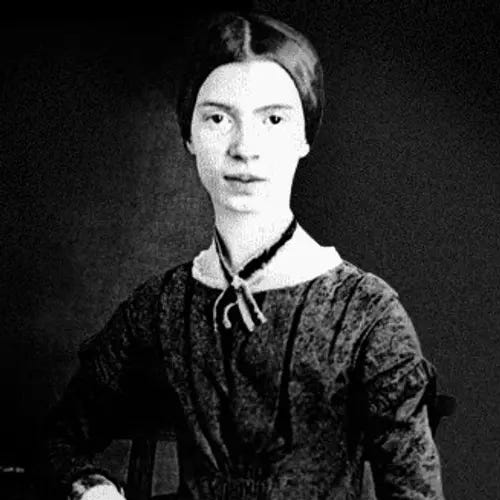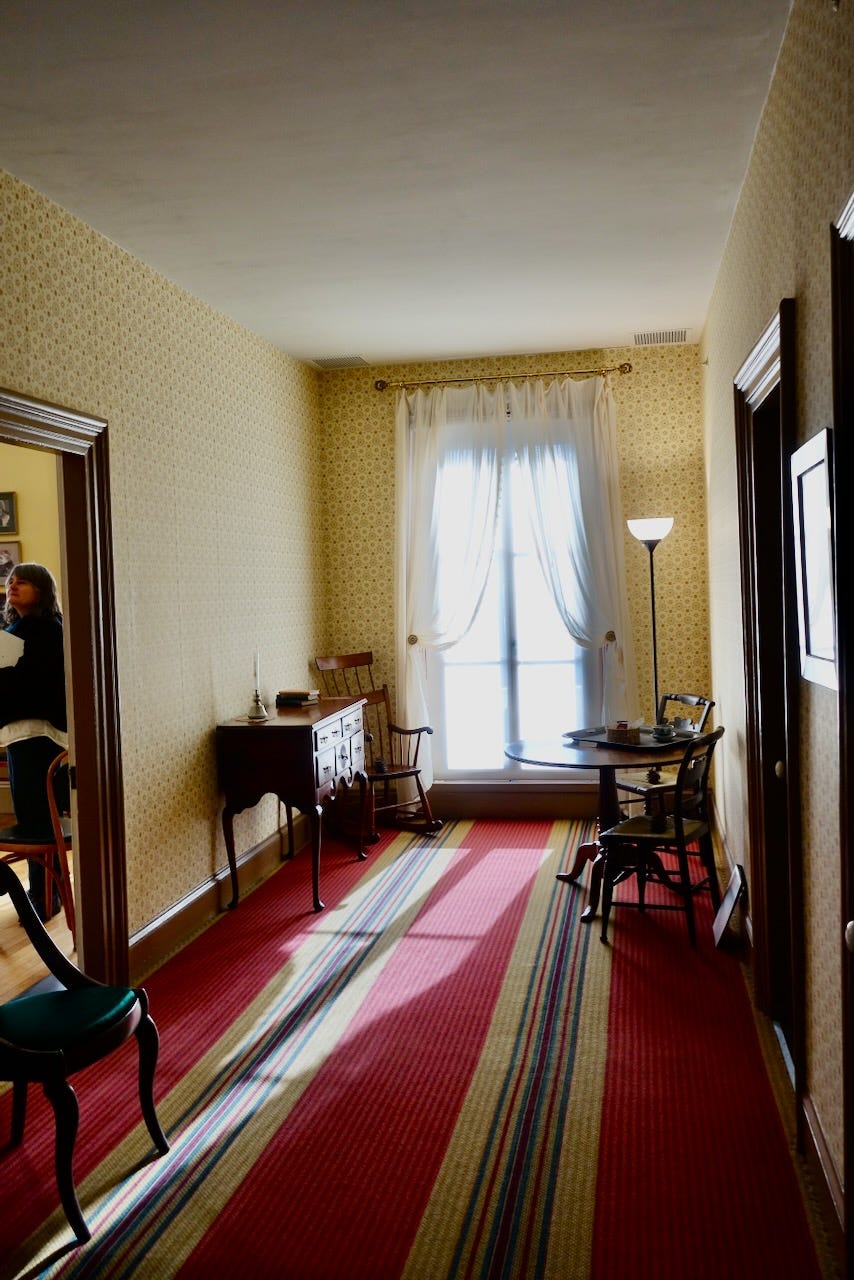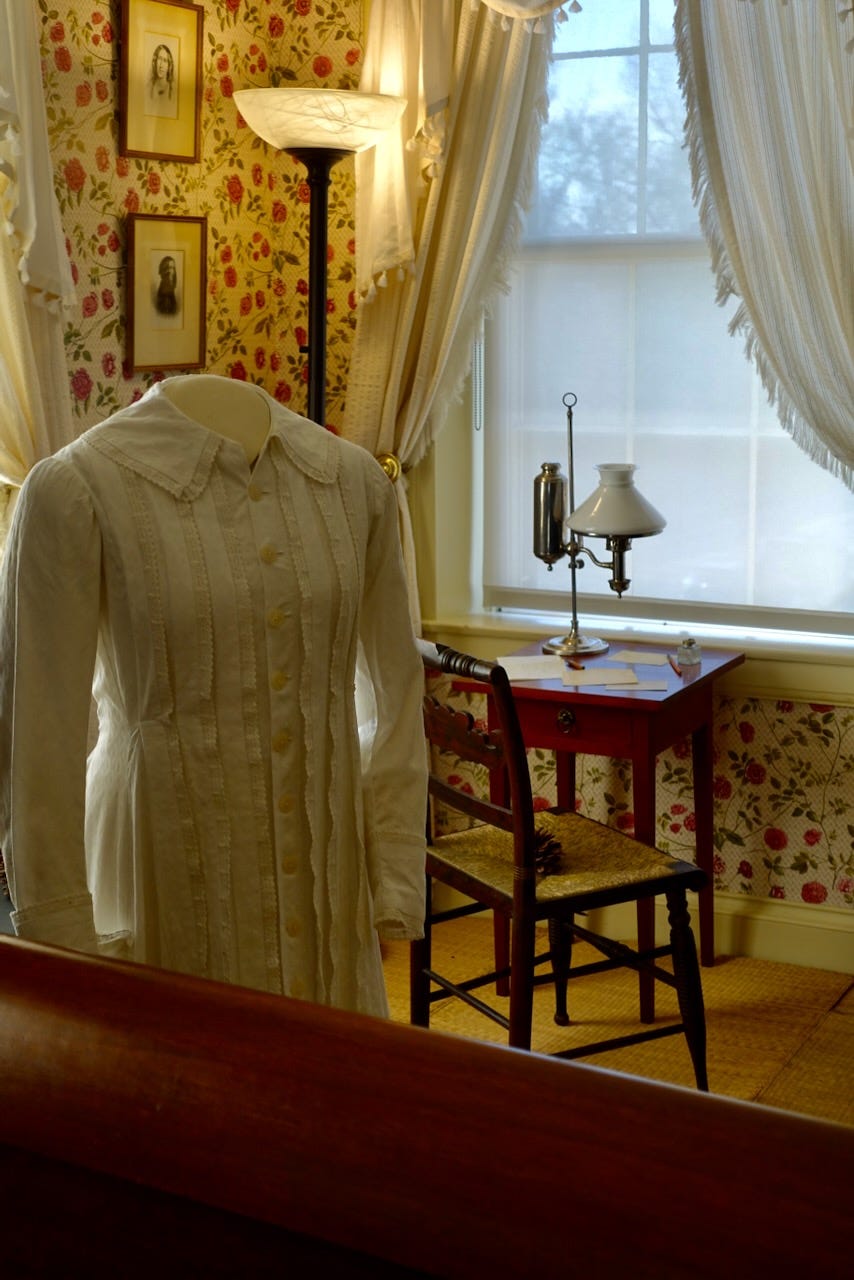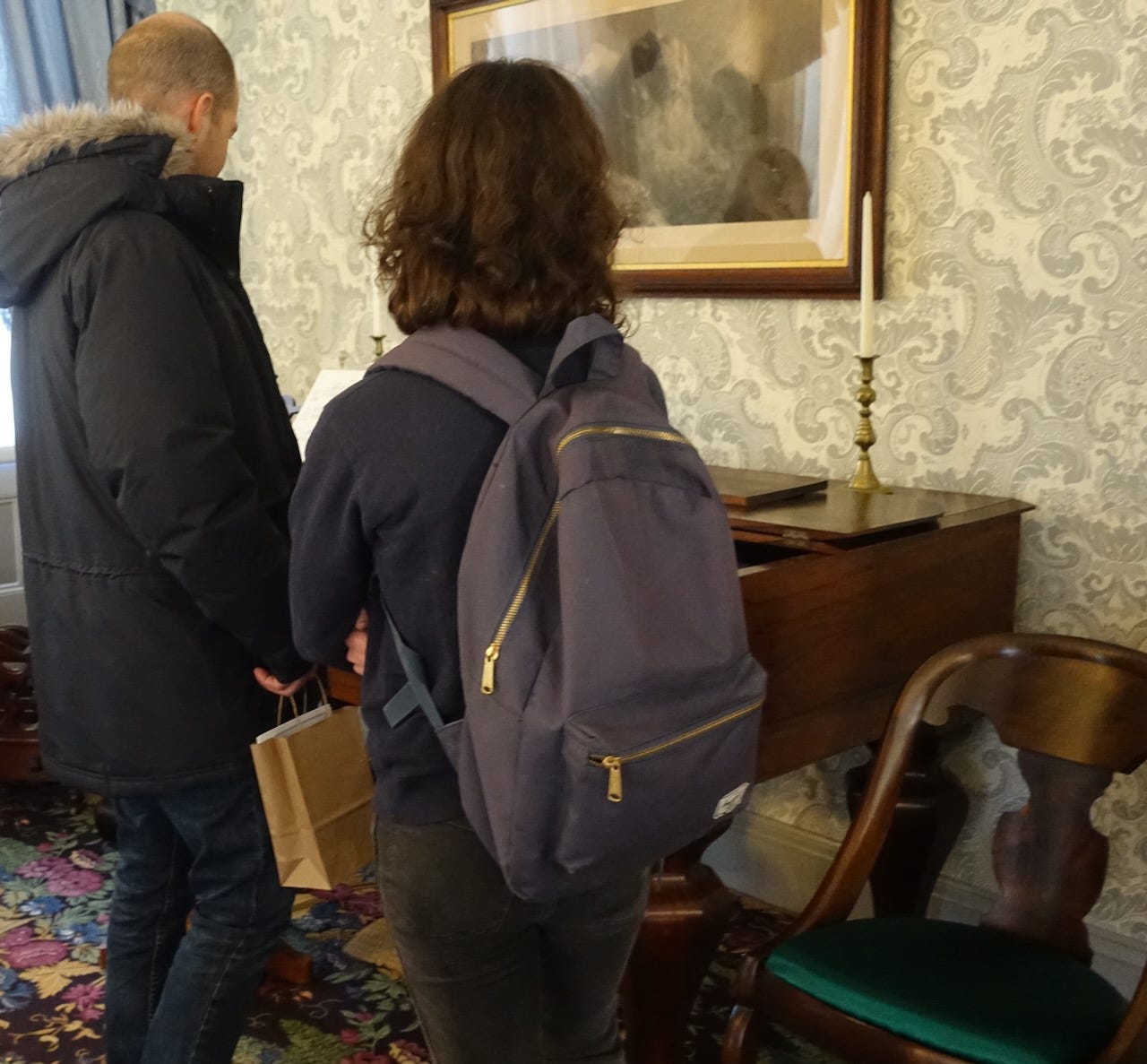Yes, Emily Dickinson was a redhead
A life of discovery and exquisite restraint, written on the eve of her birthday, December 10, 1830
That life is discovery and all our opinions and conclusions suspect came home to me vividly yesterday when I visited the Emily Dickinson Museum in Amherst, Massachusetts, with my poet-friend Kevin Swanwick.
Guided by the reassuringly knowledgable Carla Carpenter, whose ability to recite Dickinson’s poems at the drop of a hat delighted us, we learned that this famous photograph of the poet, the only photograph, encourages us to believe she was black-haired, but a portrait of her as a child, as well as a lock of preserved hair, show us that she was a redhead.
Her handwriting imprinted on walls reveal the exuberance of her delight in language. Who else puts a dash before a period? Who else dispenses so elegantly with a verb when convention calls for one? Her stanzas are often so —well, quick is the only word that works—that she often settles for a hyphen where a dash is meant. Her rhymes, often both irregular and slant, have a surety that makes one gleeful.
Once more I reveled in my certainty that she is the greatest of American poets and the most influential, more so even than Walt Whitman whom she was advised not to read because he is “disgraceful” by her incessant correspondent Thomas Wentworth Higginson, advice she took for better or worse.
We learned that athough Herman Melville lived close by near Pittsfield she was apparently unaware of the poetry he wrote for some thirty years after the poor reception of his novels Pierre and Moby-Dick. We found Moby-Dick in her library. Melville, identified irrevocably with Cape Cod and whaling, lived near the volatile Housatonic River. Dickinson lived by the tamer and much broader Connecticut River where she would have seen college rowers.
We learned that Dickinson was an avid gardener and collector of plant specimens and spent much of her time out in the family estate or the greenhouse that her supportive father built for her.
We saw her piano, her tiny writing desk, her favorite white house gown, her bed, books, and a compendious concordance of her restless and voluminous correspondence. She published only ten poems in her lifetime, all of them anonymous.
Dickinson wrote some 1,800 poems, performed the duties expected of a member of her prestigous family, nursed the sick, and enjoyed the understanding and respect of her austere Congreationalist family. There is no record of her joining the church, as would be expected of adults in her society, but the concept of divinity runs throughout her work.
Although cordial, even deferential, Dickinson was excruciatingly selective in her small circle of friends, increasingly so as she aged. She had her thoughts and her poems and her plants for company.
Here are some of the photographs I made of her home:











Letter #261 to Higginson indicates that "You speak of Mr. Whitman—I never read his Book—but was told he is disgraceful—" I take this to mean that she is telling Higginson that someone not named in the letter advised against reading Whitman and characterized him as "disgraceful." She refers to Whitmans "Book." Leaves of Grass was first published in 1855, so it is likely that it was the book she was referring to. The letter to Higginson was dated April 25, 1882. On March 1 of 1882, the Boston District Attorney had written to Whitman's publisher asserting that Leaves of Grass was "obscene literature." Whitman had to find another publisher (his own was going to redact parts of the work based on the DA's demands). Perhaps this controversy was in circulation amongst literati in New England as it was happening.
Thanks so much.